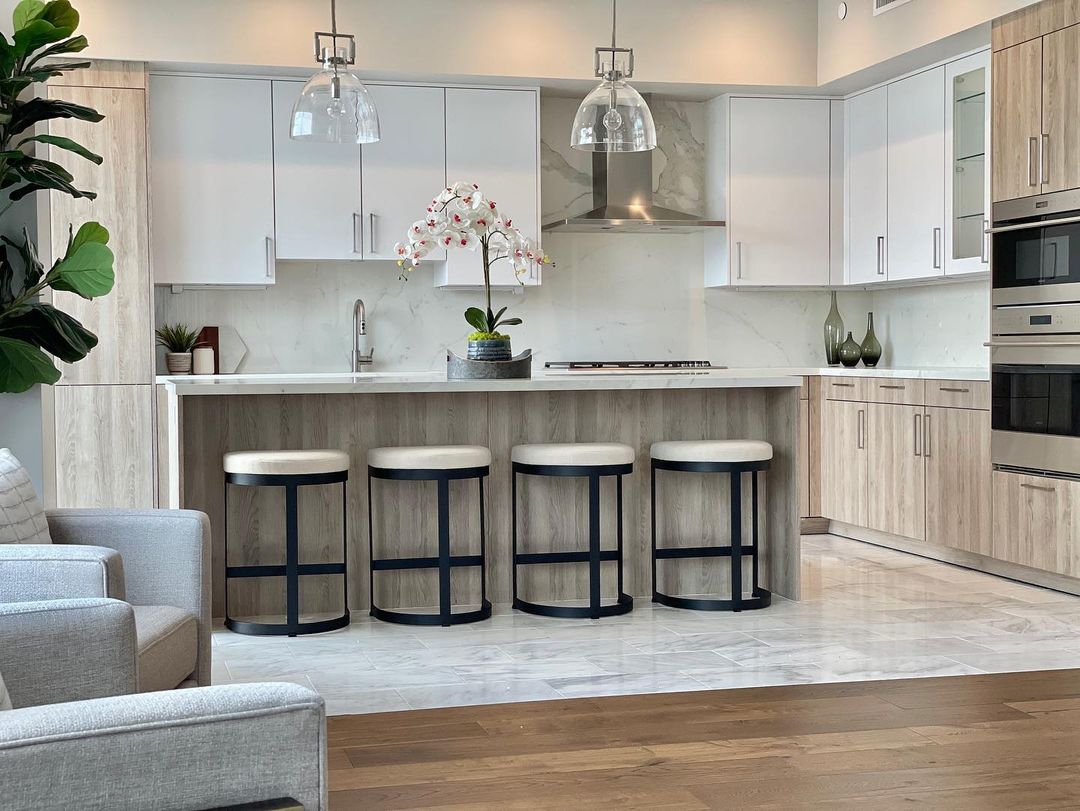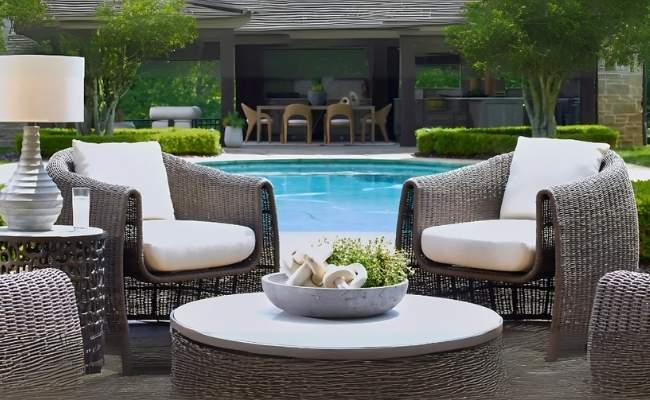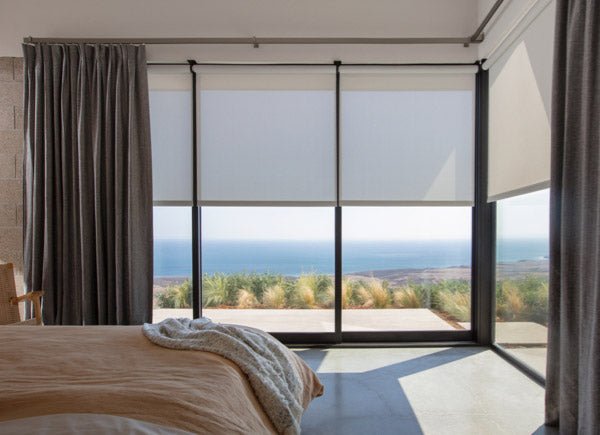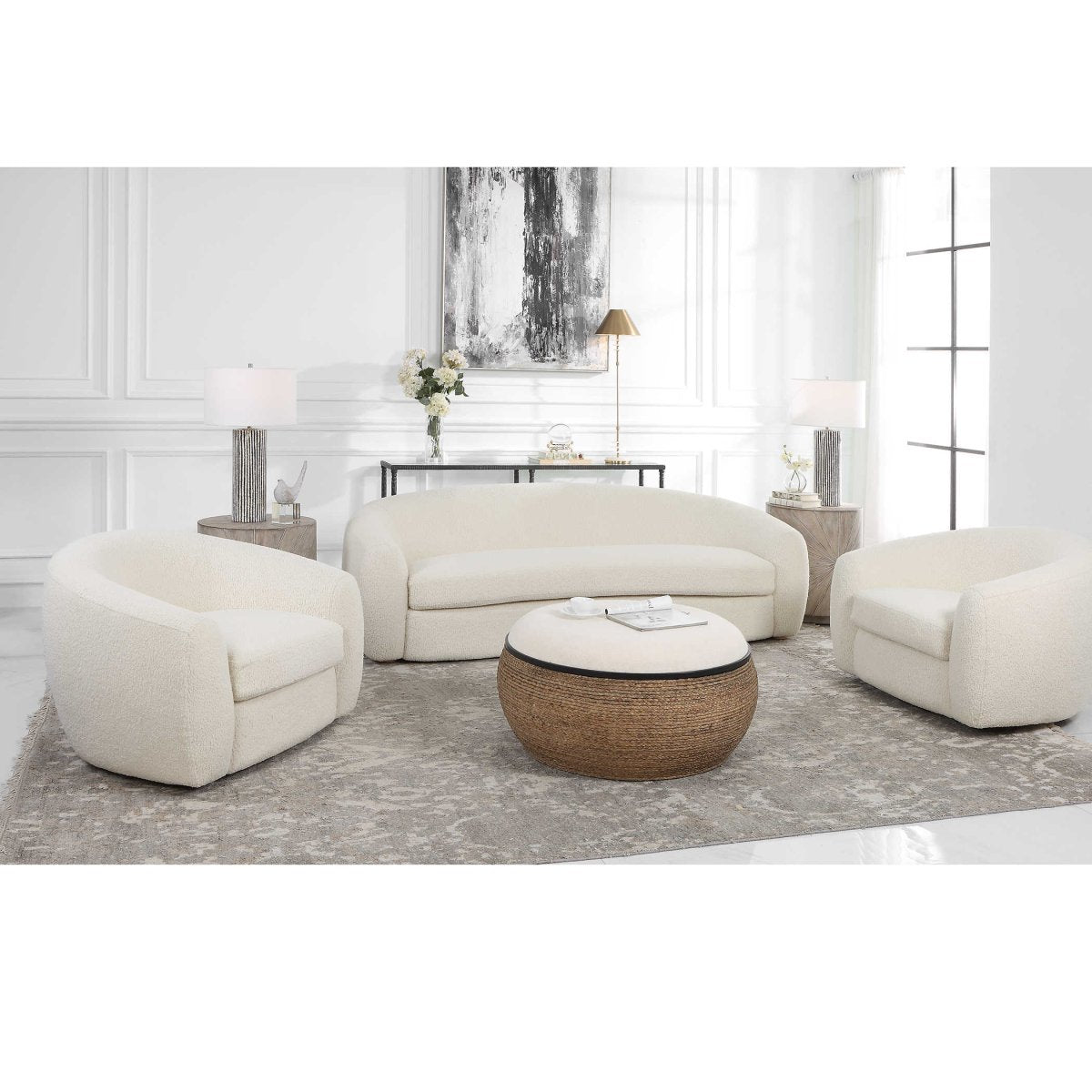
Accessorizing Your Living Space

2021 Kitchen Design Trends
Accessorizing your space is the most fun and easy way to create an individualistic atmosphere. The way you choose to arrange and accessorize also speaks volumes about your personality, as well as how you feel, the things that interest you, and maybe even your past (i.e. travels, family, experiences). There are many ways to decorate your home using objects such as books, lamps, and lighting fixtures, items from your travels, items you find outside of your home (such as pinecones), mirrors, vases, greenery, and items in a store you simply find aesthetically pleasing. Another idea for accessorizing is to take everyday items out of context, which can become decor/works of art when put on display. The bottom line is just to have fun and experiment with what makes you feel at ease in a comforting surrounding.
Details you must consider when deciding on how to individualize your space are the color of the objects, the size and shape of the objects, the position of the object with what it's surrounded by, and the position of the object with what it rests on.

When you begin your project, you need to take a look at the basic color of your space. Generally, it is a good idea to have a neutral color as the basis, but everyone has their preferences and many amazing spaces are based on non-neutral colors. This color will generally make up around 60% of the space you are working with. Once you have recognized this, pick or understand what your secondary color is. This may be large furniture pieces in the space or even a large (in proportion to the area) accent wall. It is always a good idea to spread this color over the space as not to have only one piece or area with this color or in the color family. This color should be around 20% of the space. Lastly, choose the color(s) that will be your accent(s). This group will make up about 10%. It is important that your accent color not be too much greater than this, as it is just an accent and can be a bit overwhelming when used too often over the space. Like mentioned before, everyone has their preference, it is just important that the space is appealing and comfortable.
When considering the size and the shape of certain objects remember that you never want to mirror objects completely unless you are setting a long dining room table. Objects should be placed in an arrangement similar to the "rule of thirds," as in photography. This rule states that if you were to draw two lines vertically, and two lines horizontally, at the one-third and two-thirds mark, respectively, the eye will feel more at ease with the dominant object resting at one of the four points at which the lines cross and the smaller, or more recessive, components at one of the other crossing points. For example, placing a taller or larger object towards one end of the mantle and a slightly smaller piece towards the other end will help to break the tension created by having two identical pieces mirror one another on either end. The same concept applies to setting a couple of ornamental vases/décor pieces on a console or side table. You want to have a small variance in size, not two identically sized objects next to one another. There are exceptions to this rule depending on the placement of other objects and the balance of the space. You also do not want a dramatic difference in the size of the objects, as one will overpower the other or even seem like it may topple over! The same applies to setting an oversized object on a smaller piece of furniture or a tiny object on an oversized piece of furniture. You never want one to overwhelm the other, as you have carefully chosen every element in the room and they all deserve attention.

As you may notice in both pictures, the lamps are placed to one side of the console and side table with smaller decorative items towards, but not fully at, the other end of each piece of furniture. In both examples, you notice the groupings of items. In the picture to the left, the two vases set on the side table are set just to the left of the center of the table, as not to be directly next to the lamp and exaggerate the size of either object. In each grouping, none of the objects placed together are of the same height. In the picture to the right, the objects on the table in the foreground are arranged in a triangular pattern to create a visually pleasing aesthetic and accentuate the differing heights of the items. If you have a few items that are the same size, that you'd like to assemble, try utilizing other objects you can find, such as books, to alter their height and fashion a more interesting space for the eye. Also, think about the shape of the medium your accent décor rests on. For example, you can arrange items on a long-running table in a straight line emphasizing extended lines, or in triangular/clustered groups to construct a weighted feel in a certain area or to provide a different impact to the eye. Setting a few pieces on a decorative tray can be a fun way to accentuate them and make it an easy way to move the whole arrangement out of the way or to another area keeping it stable (resting on a bed or plush surface).
When considering wall décor you need to once again observe the space that surrounds you. Size, color, and shape are very important! If you have a smaller space, a strategically placed mirror can create a sense of openness. Mirrors with different styles of cross-hatching can easily be mistaken for extra windows allowing more natural light. The colors you choose for your wall décor should tend toward, if not utilizing, your accent colors. You want it to stand out and not blend in with the surrounding. It is common to mimic shapes in the space with larger objects such as paintings and other framed articles. Smaller wall décor, such as pendants, should have a much sharper contrast to their surroundings as not to be engulfed by their surroundings.

In both of the above photos, you see how mirrors are used to open the space as well as further reflecting the abundance of natural light. The long narrow canvas in the background of the left picture is an example of using wall décor to mimic other natural shapes in the space. As it mimics the tall, narrow shape of the window, it is also not as tall as the window, making a bridge for the eye to the lower and smaller pieces in the room. Also, you may note that the colors in the painting and frame echo the accent colors of the room. The painting in the foreground of the photo is also larger and loftier, bridging the high ceiling to the lower furnishings. You may also choose to do an arrangement of smaller framed pictures/art that reaches a bit higher if you prefer it to one large piece.
The pendants in the picture to the right are an example of using smaller wall décor with a sharp contrast inhibiting them from getting lost in the large, white, wall space. You will also notice the sharp contrast also reflects other sharp accents in the side tables, the chest at the foot of the bed, and the chair at the left corner of the photo.
Lighting, alone, is a whole subject that one can spend hours, days, or weeks, even years, studying. There are many things to consider when picking out the type of lighting in your space. Here we will only discuss lighting for décor purposes. When considering lighting, you must first decide what color lighting you would like (i.e. soft, fluorescent, or mostly natural) and then what the actual fixture looks like.

In the pictures, you will notice that the two lamps are very modest and most likely do not give off a great deal of light. This was chosen due to the abundance of natural light in the room, streaming from the lofty windows. The lamps themselves do not draw immense attention to themselves, just carry slight hints of the accent colors a bit further into the room, as you can see in the picture to the left. This creates a more modest décor throughout the room, which lends itself to an opening for a focal point in the room-the hanging light fixture. If there is too much going on with the decor of the room, the beautiful light fixture would be lost in the chaos. In a space filled with many decorative objects or colors, the style of a hanging light fixture should be more conservative as not to detract from the décor and vice versa. You may also notice that the hanging light repeats one of the accent colors of the room to bring it into the full circle as seen in the photo on the right.
There are many different schools of thought when it comes to decorating one's space. Here, we focus a bit more on modern styles of decorating. In the end, we cannot emphasize enough that it all depends on each individual and what makes you most comfortable in your own space or one you are decorating/designing. Sometimes it takes spending time in the space to understand what works. You may fall flat the first few tries, but hopefully, it will at least create some sparks!





Leave a comment
This site is protected by hCaptcha and the hCaptcha Privacy Policy and Terms of Service apply.